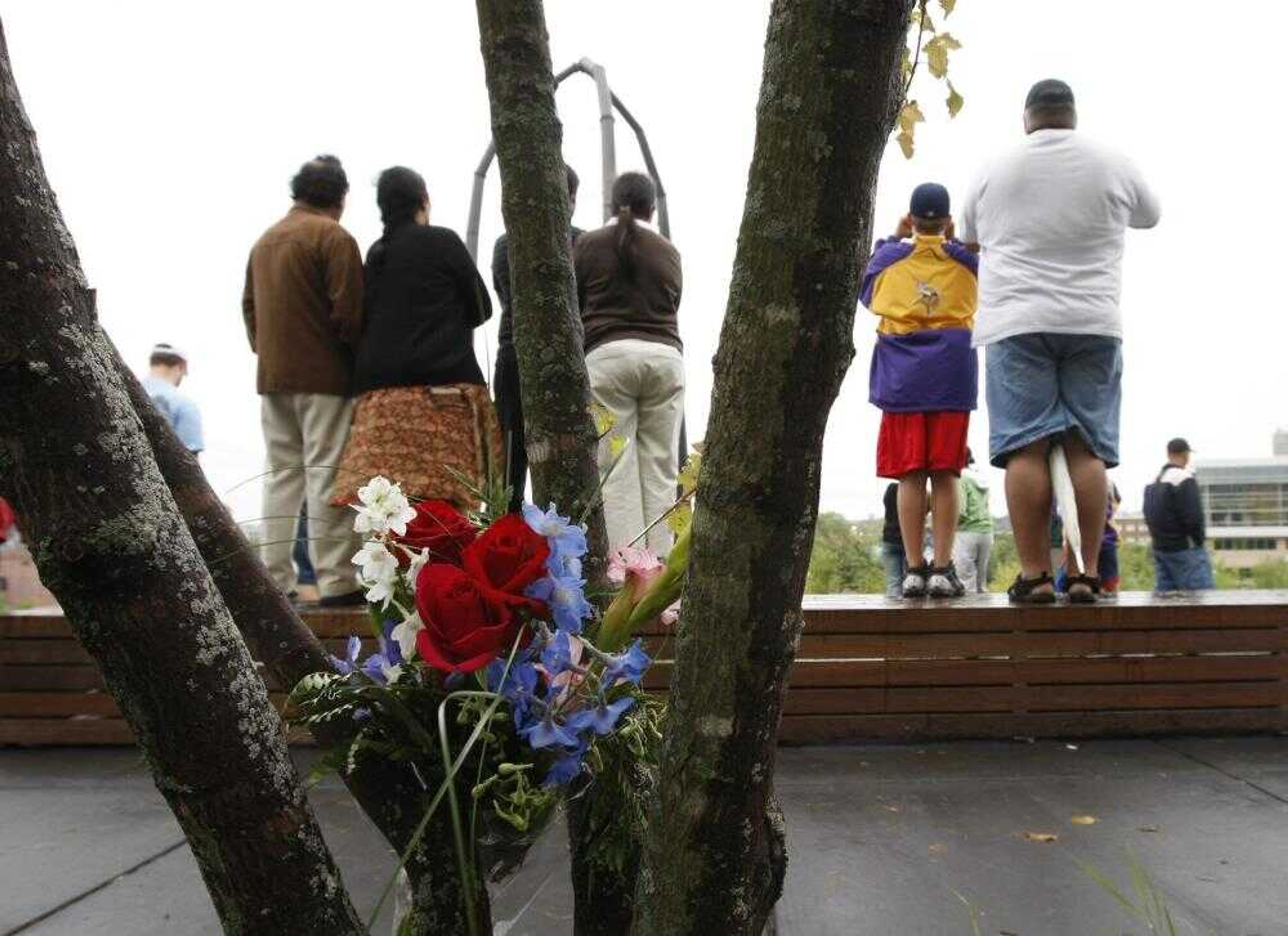High-tech tools employed to solve bridge collapse
MINNEAPOLIS -- A helicopter with a camera similar to those used in Hollywood movies will soon peer into the wreckage of last week's collapse of a bridge over the Mississippi River in Minneapolis. Laser-guided surveying equipment has helped produce an in-depth map of the debris. Software re-creating the disaster on a computer screen may even be able to pinpoint the exact piece of bridge that gave way...
MINNEAPOLIS -- A helicopter with a camera similar to those used in Hollywood movies will soon peer into the wreckage of last week's collapse of a bridge over the Mississippi River in Minneapolis.
Laser-guided surveying equipment has helped produce an in-depth map of the debris. Software re-creating the disaster on a computer screen may even be able to pinpoint the exact piece of bridge that gave way.
Investigators trying to determine the cause of the disaster are armed with a powerful technological arsenal that will enable them to get answers much quicker than in previous eras, when crews literally had to put the pieces of fallen bridge back together.
"Computers and modeling techniques are just light years from what was available 40 years ago," said Ted Galambos, a professor emeritus of structural engineering at the University of Minnesota and an expert in the stability of structural steel. "Now we can have an idea and we can test that on a computer in a few hours."
Even the dive recovery teams are turning to technology for help, using underwater video cameras to look under dangerously unstable debris. Local teams have also requested help from FBI and Navy dive teams in the search for the eight people feared dead in addition to the five confirmed victims.
State transportation officials said they would begin removing bridge debris from the Mississippi River later this week. Besides helping with the recovery operation, one goal of clearing the wreckage is to open a channel at least 56 feet wide to accommodate barge and boat traffic. Officials offered no timetable for how long it would take
Investigators caution that it could take as long as 18 months to complete their exhaustive probe into why Minnesota's busiest bridge collapsed and fell into the Mississippi River on Wednesday. But they already have begun zeroing in on clues.
On Friday, they were focusing on the south section of the bridge, where they quickly found that the span shifted 81 feet during the collapse.
On Saturday, the north side became the focus. That's where they plan to use a helicopter equipped with a high-resolution camera that can examine the debris in precise detail for any troublesome signs. The camera is kept steady by a gyroscope -- which is how Hollywood crews get smooth footage while filming from a helicopter.
Investigators also plan to watch frame-by-frame enhancements of video of the collapsing bridge. In addition, the FBI used laser-guided surveying equipment to complete a detailed 3-D map of the wreckage, and quickly provided the data to the lead investigation agency, the National Transportation Safety Board.
Nineteen NTSB investigators are in Minneapolis. They will be working with investigators in Washington who will be putting in long hours in front of computers.
That will include re-creating various bridge collapse scenarios with high-tech software in what is called a "finite element analysis," in which investigators can simulate removing a key supports from the bridge and see how the bridge reacts.
During his weekend news conferences, NTSB chairman Mark Rosenker repeatedly stressed the value of the computer modeling program.
"Every day we make progress in understanding at least where the failures are not. Where they are is where we're going to have to work a lot harder," Rosenker said.
The early clues and advances in technology could make for a far speedier investigation than after past bridge collapses.
The investigation into the 1967 collapse of a bridge linking Gallipolis, Ohio, and Point Pleasant, W.Va., took more than four years. It found that the cause "was a crack no bigger than a fingernail," said Galambos, the engineering professor.
"It was a very long and involved process. It reads like a detective story," he said.
Connect with the Southeast Missourian Newsroom:
For corrections to this story or other insights for the editor, click here. To submit a letter to the editor, click here. To learn about the Southeast Missourian’s AI Policy, click here.








